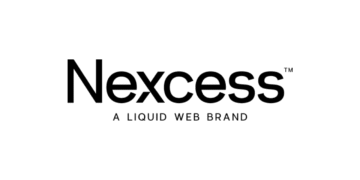What if a simple idea could reshape how organizations and communities solve deep-rooted problems and deliver lasting value?
Social innovation means new, practical approaches that meet public needs better than current options. These approaches focus on creating public good, not private gain. Leaders like Muhammad Yunus and Akhter Hameed Khan show how ideas such as microcredit and cooperative housing can drive real change.
Effective change needs many actors. Governments, organizations, and people must co-design solutions that match real needs. That collaboration helps shift institutions and scale what works.

This guide previews definitions, funding paths, digital tools, user-centered design, and measurement. It aims to give readers practical strategies, models, and resources to turn ideas into implemented solutions that deliver measurable value and growth.
Key Takeaways
- Social innovation focuses on public value and better outcomes.
- Cross-sector collaboration is essential to solve complex problems.
- Design and user input ground solutions in lived needs.
- Actors like government and organizations must align to scale impact.
- Readers will find practical, U.S.-focused strategies and resources.
What Is social innovation and Why It Matters Today
C. When a fresh approach improves outcomes and fairness, communities see real, measurable change.
Definition: A social innovation is a novel solution to a public problem that is more effective, efficient, sustainable, or just than existing responses and whose main value flows to society rather than to private gain.
How value differs: Public value emphasizes inclusion, justice, and broad benefits. Private value focuses on returns to firms or individual consumers. Prioritizing the former guides better policy and funding choices.
Novelty means “new to the user or context,” not always world-first. That practical framing helps organizations adopt proven ideas across cities, agencies, or sectors.
Solutions can be services, programs, policies, movements, or models. View innovation as both a process (how ideas form and scale) and an outcome (what improves people’s lives).
Grounding choices in research boosts precision when evaluating programs addressing inequality, health access, or climate issues.
From Idea to Impact: The Mechanisms Behind Social Innovations
A strong process is the bridge between an idea and lasting societal change. Turning concepts into durable programs requires four linked elements: a creative process, the outcome itself, a clear adoption path, and measurable public value.
How the system works
Process starts with stakeholder-led design, rapid prototypes, and iterative testing. Good process raises the odds that ideas become real, usable solutions.
Product, diffusion, and value
The product or service is only one part. Diffusion is distinct from invention: excellent products often fail to spread because of policy, incentives, or governance barriers.
Transformative change occurs when actors shift norms and institutions that created persistent problems. Examples include microcredit methods and open collaboration models that change rules, not just symptoms.
Track progress at each stage: milestones in the process, pilot outcomes, adoption rates, and long-term social value so leaders can adapt and scale what works.
Historical Roots to Present Momentum
Major economic shocks have repeatedly reshaped how communities organize, fund, and scale practical solutions. The Great Depression, for example, pushed governments and civic groups to create new safety nets and institutions that lasted for decades.
Mid-20th-century investments in research and public infrastructure then spurred major gains in health, housing, sanitation, and mobility. Federal programs, universities, and city planning moved ideas into daily life.
Thinkers and diffusion
Leaders from Robert Owen to Peter Drucker and Michael Young shaped how people think about cooperative models and organizational design. Late 20th-century diffusion and systems research improved methods for spreading what works across institutions.
The digital era since 2014 marks another inflection. Platforms, open data, and online communities let people co-create solutions faster and at larger scale.
Throughline: institutions evolve, and effective innovations align with the incentives and capacities of their time. That alignment explains why some ideas spread while others fade.
Key Actors and Cross‑Sector Collaboration
Key actors operate in overlapping roles. Governments set rules and fund programs. Nonprofit and for-profit organizations deliver services and manage operations.
Roles of governments, organizations, communities, and entrepreneurs
Government creates enabling policy, grants, and procurement pathways that scale what works.
Organizations — from clinics to businesses — translate policy into services and steady management.
Communities define priorities and test whether solutions meet real needs.
Entrepreneurs take smart risks to pilot new models, attract capital, and press established actors to adapt.

Universities and research centers as catalysts
Universities convene partners, generate evidence, and run neutral pilot studies. Centers like the Cambridge Centre for Social Innovation help translate research into usable tools.
By offering labs and data analysis, these institutions speed learning and reduce risk for entrepreneurs and business partners.
Effective coalitions share responsibilities, align incentives, and use shared governance and data sharing to sustain change. That mix of public legitimacy, private efficiency, and community insight is how durable innovations spread.
Focus and Application Areas Shaping Society
Practical change often starts by focusing on a few sectors where new approaches deliver clear, measurable benefits. Mapping priority domains helps leaders choose where to test and scale what works.
Education, public health, environment, and community development
Education reform can improve outcomes when schools adopt evidence‑based delivery models and share data across districts. Health systems test new clinic workflows and telehealth pilots to expand access and efficiency.
Public services innovation in action
Scandinavian and several Asian countries have pioneered changes in public services that reconfigure roles, budgets, and incentives. City pilots often redesign casework, routing, and partner roles to boost equity and reach.
Complex adaptive systems and iterative process
Complex adaptive systems require policies that iterate as needs and behaviors shift. Practitioners should treat programs as learning platforms that evolve with feedback from individuals and families.
Diffusion and local alignment
Replicating effective school, clinic, and neighborhood models works best when teams align with local needs and preserve core quality features. Cross‑sector pilots and community input speed adoption while keeping solutions relevant.
Principles, Models, and Business Approaches that Deliver Value
Practical models and clear revenue paths keep mission work alive after initial grants end. Leaders design structures that produce public value and a feasible funding logic.
Business models that sustain impact
Mission-aligned business models let organizations capture some value to cover costs while driving outcomes. Charge fees for premium services, use tiered pricing, or partner with local governments to blend contracts and grants.
Entrepreneurs should map costs, partners, and roles before scaling. Test a minimal product to validate demand, unit costs, and impact pathways.
Open development, sharing, and co‑housing
Open source collaboration co-develops products, tools, and knowledge for public benefit. It lowers duplication and speeds diffusion across organizations.
Collaborative consumption and co-housing share resources, cut costs, and boost ties. These models recombine existing elements—what scholars call “connected difference”—to cross boundaries and create new relationships among actors.
Design principles
Focus on a clear societal value proposition, feasible revenue or funding logic, and defined partner roles. Start small, measure results, and iterate before expanding.
The United States Landscape: Policy, Programs, and Institutions
Public funding, matched philanthropy, and university labs now form a practical pipeline for tested programs to reach communities.
Federal role and matched funding
The White House Office for Social Innovation and the Social Innovation Fund catalyze public‑private partnerships that test evidence‑based programs. In 2010 the fund listed 11 investments where federal dollars were matched by foundations and businesses.
Universities and research centers
Leading U.S. universities build talent, run pilots, and publish research that informs policy. Centers at Harvard and other schools help translate small trials into wider programs.
Sector partnerships and institutional infrastructure
Local coalitions combine community organizations, business partners, and agencies to align solutions with real needs. Strong institutions—policies, data systems, and funding pathways—let effective approaches spread across cities and states.
Practical tip: Tap federal, state, and foundation resources to pilot, evaluate, and scale community‑driven work that delivers measurable public value.
Financing Impact: Strategic Alliances, Funding, and Resources
Aligning the right partners and capital at the right time makes growth achievable for mission-driven ventures. Strategic alliances bring capabilities, distribution channels, and credibility that lower capital needs and speed expansion.
Equity and non‑equity alliances for growth
Equity partners often provide long-term capital plus governance support that helps scale proven models.
Non-equity alliances — such as partnerships, accelerator services, or in-kind commitments — deliver market access and skills without diluting mission control.
Social impact bonds, crowdfunding, and blended finance
Social impact bonds are outcome-based contracts that repay investors only when agreed results occur. They align investors, nonprofits, and government around measurable impact and shift risk away from public budgets.
Crowdfunding validates demand, builds a base of engaged supporters, and diversifies resources beyond traditional programs. It also signals market fit to larger funders.
Blended finance combines philanthropic grants, public funds, and commercial capital to de-risk projects and bridge early funding gaps. This mix helps scale solutions with measurable impact.
Stage-appropriate guidance: use grants for pilots, recoverable grants or revenue financing to reach traction, and impact investments for scaling. Entrepreneurs and organizations should match capital type to governance needs, learning goals, and growth targets.
Digital Social Innovation and Technology‑Enabled Solutions
Digital tools let communities co-create solutions at scale, connecting users, data, and services in new ways.
Platforms, open data, and virtual volunteering
Platforms and open data enable co-creation, transparency, and rapid iteration. APIs and shared datasets let civic tech groups and governments build apps that meet specific local needs.
Virtual volunteering matches skills to needs across geographies. It scales expertise quickly and lowers barriers to participation.
Telehealth, distance learning, and access‑driven services
Telehealth and remote learning extend access, cut costs, and keep services running during disruption. These models improve continuity of care and learning when physical access is limited.
Design teams must prioritize data interoperability, privacy, and responsible AI. That ensures platforms protect users and support trusted scaling.
Practical guidance for teams
Combine user research with agile methods to ship features that solve real issues. Work with civic data publishers and researchers to test outcomes and improve learning.
User‑Centered Design, Co‑Creation, and Systems Thinking
Good design begins by listening—asking questions that reveal how services feel to the people who use them. This approach puts empathy at the center of any innovation effort and helps teams build with, not for, communities.
Empathy and participatory methods
Start with discovery interviews and journey mapping to surface real pain points. Use rapid prototyping and small pilots to test ideas before large rollouts.
Co-creation sessions with frontline staff and affected individuals increase adoption and equity. Embed lived-experience councils to keep feedback continuous and accountable.
Systems mapping and root-cause work
Apply tools like causal loop diagrams and problem trees to trace underlying drivers. Clear problem framing and hypothesis testing focus resources on high-leverage changes.
Teams that iterate—measure, learn, and adjust—reduce risk and improve fit. As organizations synthesize stakeholder insight, ideas evolve into practical service and policy designs that scale.
Measuring What Matters: Outcomes, Impact, and Learning
Measuring outcomes turns good ideas into accountable programs that communities trust. Clear metrics link day-to-day activities to long-term public value and guide smarter decisions.
Choosing meaningful metrics and mixed‑methods evaluation
Select outcomes tied to your theory of change. Use leading indicators that predict ultimate impact and cost‑effectiveness. Blend quantitative measures with qualitative feedback from individuals and communities to capture context and equity.
Iteration, adaptation, and scaling strategies over time
Run continuous learning cycles: test, measure, reflect, adapt. Short cycles reduce risk and reveal what fails fast. Use replication toolkits and build local capacity to scale while keeping fidelity to core design.
Report beyond outputs. Document cost savings, quality gains, and equity impacts. Practice strong data governance and open learning so research and peer benchmarking accelerate sector development and wider uptake.
Challenges, Ethics, and Equity in Social Change
Every project that seeks lasting change must plan for justice, access, and environmental limits from day one. Ethical choices shape whether programs widen or reduce inequality. Teams in the United States must design governance and funding to protect rights and sustain results.

Ensuring justice, access, and long‑term sustainability
Common challenges include mission drift, inequitable access, data harms, and short funding cycles that weaken programs. These issues often force organizations to prioritize survival over outcomes.
Ethical practice requires consent, transparency, and a do‑no‑harm stance. Adopt Responsible Research and Innovation principles: engagement, gender equity, open access, and clear governance to build trust.
Institutional barriers such as misaligned incentives or outdated policies stop change from becoming systemic. Reform pay‑for‑service rules, procurement, and evaluation norms to embed equitable access across institutions and business partners.
Practical steps: run equity reviews, apply accessibility standards, create community accountability boards, and include environmental risk in planning. Use structured change management to align teams, boards, and partners around justice‑centered goals.
Illustrative Cases: Ideas into Programs with Real‑World Impact
Real-world programs show how ideas become durable services that reach people at scale. These cases reveal design choices, market tools, and measurable outcomes that turn concepts into practical solutions.
Grameen Bank and microfinance
Grameen Bank expanded access to credit for individuals excluded from conventional banks. Its group lending model, plus savings and micro‑insurance, helped entrepreneurs start small businesses and build steady incomes.
Fair trade and emissions trading
Fair trade uses certification labels and transparent pricing to raise farmer incomes and improve labor standards. Millions of farmworkers gained higher pay, notably coffee growers.
Emissions trading sets pollution caps and issues tradable permits so firms cut emissions where it costs least. Permit registries and monitoring create trust and measurable environmental gains.
Charter schools and community planning
Charter schools combine public funding with operational autonomy to test new education models. Community‑centered planning aligns programs with local development needs and improves participation.
Takeaway: product and service design—group lending, certification, permit systems, and local planning—make these models adoptable. Measured outcomes include income gains, participation rates, environmental metrics, and education results that demonstrate lasting public value.
Conclusion
Sustained change comes when teams align purpose, process, and policy around measurable public value.
Centering social innovation on justice and public value, not profit, is what sets it apart from ordinary innovation. That focus helps ideas become services that benefit society at scale.
Durable results need four linked pieces: a clear process, a viable product or model, intentional diffusion strategies, and rigorous measurement of impact. User‑centered design, systems mapping, and iterative testing turn ideas into reliable programs.
Pair practical funding and business models with partnerships and policy support to embed change in institutions. Apply these lessons, measure outcomes, and share results so the field can grow better and faster.
FAQ
What does “driving social innovation” mean in practice?
Driving social change means creating and spreading new ways to solve community problems so people gain better access to services, education, health care, and economic opportunity. It involves designing practical interventions, testing them with users, measuring results, and partnering across government, nonprofits, universities, and businesses to scale what works.
How do these approaches differ from traditional product development?
Unlike product development that often focuses on a single market outcome, this approach treats change as an ongoing process. Teams emphasize user needs, systems mapping, and iterative testing. Success is measured by improvements in people’s lives and institutional shifts rather than by unit sales alone.
What is the difference between social value and private value?
Private value accrues to individual payers, investors, or customers. Social value refers to broader community benefits such as reduced inequality, better public health, or increased civic participation. Many successful models combine both, offering sustainable business streams while generating public good.
Which actors typically lead or enable these efforts?
Leadership comes from a mix: municipal and federal agencies, foundations, universities, community organizations, and mission-driven entrepreneurs. Each brings different resources—policy levers, research, funding, networks, and on-the-ground trust—that make cross-sector collaboration essential.
How do universities and research centers contribute?
Higher education institutions supply evidence, evaluation methods, and pilot projects. They train practitioners, host incubators, and translate academic research into practical programs. Partnerships with communities help ensure findings are relevant and applied.
What funding options support scaling effective programs?
Funding ranges from traditional grants and program contracts to blended finance, social impact bonds, equity investments, and crowdfunding. Strategic alliances with banks, foundation support, and impact investors help programs transition from pilots to wide adoption.
How has history shaped current approaches to change?
Crises such as the Great Depression, civil rights movements, and recent digital shifts created new needs and tools. Today’s momentum reflects lessons learned about public policy, community organizing, and technology’s role in widening access and reducing costs.
What role does technology play in expanding reach?
Digital platforms, open data, telehealth, and distance learning reduce barriers to services and enable rapid feedback loops. Technology supports coordination, monitoring, and remote delivery, but success depends on equitable access and thoughtful design.
How do practitioners ensure solutions are equitable and ethical?
Teams use participatory design, inclusive research, and transparency in metrics. They prioritize voices of affected communities, assess unintended harms, and build accountability mechanisms to protect vulnerable populations.
What metrics matter when measuring impact?
Meaningful metrics align with intended outcomes—health improvements, school completion, income changes, or service access. Mixed‑methods evaluation combines quantitative indicators with qualitative stories to capture both scale and lived experience.
When should a program scale versus iterate locally?
Scale makes sense after consistent, evidence-based results, operational readiness, and resource alignment. If core assumptions remain uncertain, teams should iterate, refine user experience, and strengthen partnerships before expanding.
Can market mechanisms like microfinance or fair trade drive change?
Yes. Models such as microfinance expand financial access, while fair trade links producers to better markets. Market approaches can create sustainable income for communities when paired with safeguards, training, and regulatory oversight.
What are examples of successful design practices?
User-centered design, co-creation with beneficiaries, and systems mapping help identify root causes and durable interventions. Empathy-driven research and rapid prototyping lead to services that people actually use and maintain.
How do public services adapt to complex adaptive systems?
Governments adopt flexible policies, pilot programs, and data-driven feedback to respond to shifting needs. Collaborating with nonstate actors and using decentralized decision-making improves responsiveness across interconnected systems.
Where can practitioners find partnerships and resources in the U.S.?
Practitioners can work with foundations, university centers, municipal innovation offices, and federal programs that fund evidence-based work. Networks such as Ashoka, Rockefeller Foundation initiatives, and university incubators provide guidance and seed funding.





